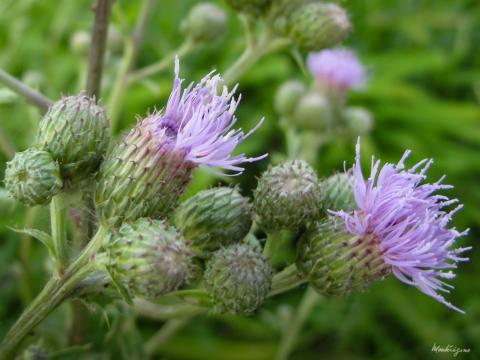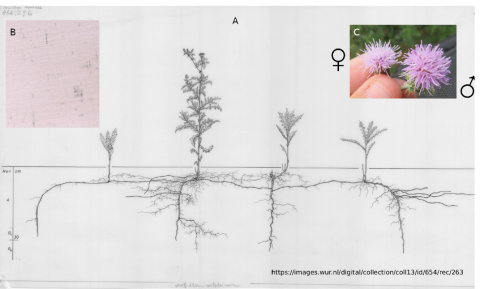
How to manage Cirsium arvense, a plant feared by farmers?
Cirsium arvense is one of the most problematic weed species in Europe. It is a perennial plant reproducing by seeds or by clonal multiplication from buds carried by an elaborate root network. Cirsium arvense colonizes open and disturbed cultivated environments (fields, meadows), semi-natural (roadsides, banks, agricultural or industrial wastelands) or natural (clearings, riparian zones).
In order to determine if locally adapted control methods would be appropriate, we will use microsatellite markers to describe:
- exchanges between Cirsium arvense populations located within and outside agricultural plots,
- the turnover of clones in agricultural plots and
- the impact of agricultural practices on reproductive patterns and population dynamics in the plots.
Genetic data will be cross-referenced with image analysis of the patterns formed by Cirsium arvense, spots on drone photos of the same plots in order to describe local population dynamics and consider the possibility of proposing targeted management methods of Cirsium arvense.
Finally, we will attempt retrospective analyses of large datasets collected over several years in order to study regional patterns of Cirsium arvense abundance and attempt to explain them with indices that characterize cropping systems, farm organization, degree of urban/rurality, and extent of recent urbanization.
This project (2023-2025) involves:
- 3 C-BASC labs and the GS Biosphera: the carrier Adrienne Ressayre (GQE-Le Moulon, INRAE), Diala Abu-Awad (GQE-Le Moulon, UPSaclay), Bruno Colas (ESE, UPSaclay) and Philippe Martin (SADAPT, AgroParisTech)
- another lab of the University Paris-Saclay (MMIP)
- 2 external labs (UMR Agroecology and UE2 Domaine d'Epoisses).
.
Figure: A. Cirsium arvense is a perennial species producing two types of roots, vertical and horizontal. They bear buds capable of regenerating entire plants.
B. Drone photo of a corn plot. On this example, the spots of Cirsium arvense (dark points) form regular lines forming a constant angle with the lines of sowing.
C. Flowers taken from a female plant (right) and a male plant (left).

